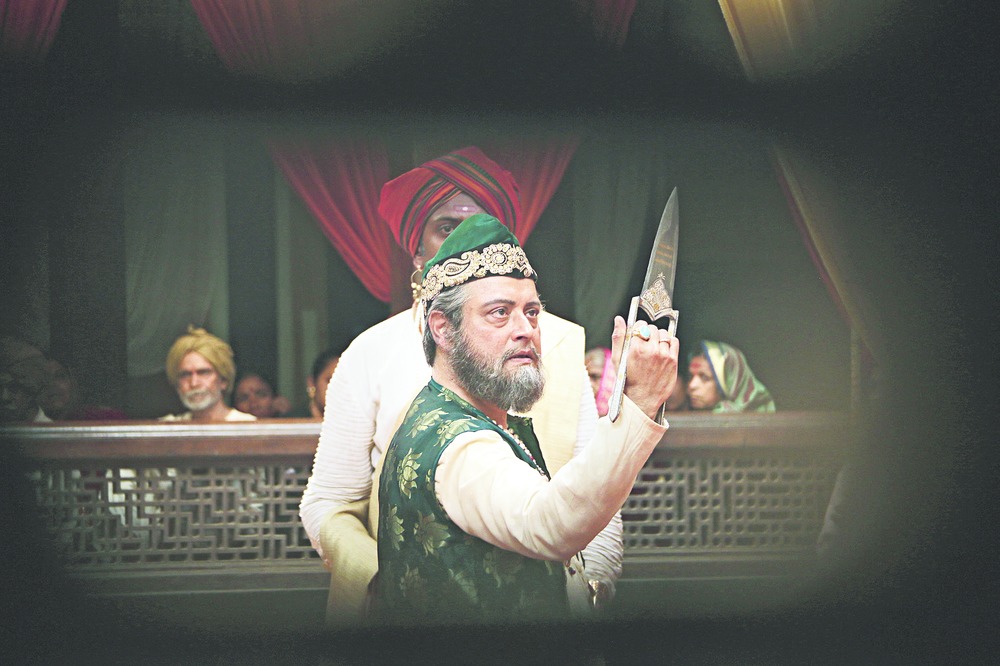
Turn your head in any direction, and you'll see Nana Patekar's familiar face on a poster near you. But the actor is not promoting a Hindi film - it's his Marathi hit Natsamrat Asa Nat Hone Nahi which is creating waves.
Released on January 1, the film, directed by Bollywood's Mahesh Manjrekar, raked in more than Rs 10 crore on its opening weekend in Maharashtra. It's been running 1,600 shows daily on 400 screens - a feat unheard of in Marathi cinema even some years ago.
Marathi cinema is on a roll - and how.
The films are getting bigger and better. Companies are putting in money, new awards are being launched and Bollywood stars are eyeing the industry. A decade ago, the Marathi film industry struggled to produce 15 films a year; today it releases close to 150 films. And many of them are mega hits making mega bucks.
"This renaissance is not surprising," says Naseeruddin Shah, who made his Marathi debut in 2011 with the National Award-winning film Deool. "After all, Marathi was the first language in which serious cinema was made by V. Shantaram in India."
The impact is being felt on Bollywood. When actor Sachin Pilgaonkar was offered the role of a classical musician in Katyar Kaljat Ghusali (KKG), little did he know then that he would give a Salman Khan-starrer a run for its money.
The Marathi film, which opened over the Diwali weekend with Khan's Prem Ratan Dhan Payo, actually elbowed Khan out. With houseful shows, multiplex owners in Mumbai increased the number of screens for KKG by cutting down on those allotted for Khan's film. And Sachin turned into a superstar.
"There was a Sachin before KKG and there is a Sachin after KKG," Pilgaonkar says, referring to stardom that's been bestowed on him with KKG, which in its first week earned Rs 8 crore, double its production cost.
.jpg)
It's not just KKG that has grabbed attention. In February, a relatively small film called Killa - the story of an 11-year-old boy trying to cope with his father's death - won critical and popular acclaim. The movie was shown on 2,000 screens, many times more than the 225 screens initially alloted to it.
"The movie worked because of its strong script," says Nikhil Sane, business head of the Marathi division of Zee Studios, the producers of Killa and Natsamrat... Killa won the National Award for the best feature film in Marathi and an award at the Berlin International Film Festival.
With Marathi cinema garnering eyeballs, stars who earlier focused on Bollywood are looking at its regional cousin with interest. KKG, for instance, marks the acting debut of singer Shankar Mahadevan.
Actors from the Hindi film industry, too, are increasingly working in Marathi films. Salman Khan, Amitabh Bachchan, Anil Kapoor, Rekha, Farah Khan and Jaya Bachchan have appeared in cameo roles. Tanuja, Sharmila Tagore, Huma Qureshi, Farhan Akhtar, Tisca Chopra, Milind Soman and Ashutosh Rane have essayed significant roles.
One of the big success stories is that of Bollywood's Riteish Deshmukh, who has produced two Marathi films. He also acted in his film Lai Bhaari, which is one of the highest grossers in the industry till date. Made on a budget of Rs 8 crore, the movie earned Rs 40 crore. Deshmukh is now working on his third Marathi film, Mauli.
Other Bollywood celebrities are eyeing the Marathi pie, too. Actor Akshay Kumar is the co-producer of a new film 72 Miles Ek Pravas, while Vidhi Kasliwal, the founder of Landmarc Films, has also been funding Marathi cinema.
"This is a platform for content-driven cinema," says Kasliwal, who started her film career as a director in Bollywood. Her production house released its first Marathi film Sanngto Aika last year.
What's brought about the revolution? Some industry watchers believe that the standards of Marathi cinema had fallen so low - with the spread of cliched, slapstick comedies - that a change for the better was the only way out.
One of the first films to make a mark in the new era was Shwaas, India's entry to the Oscars in 2004 in the Best Foreign Film category. In 2009, another Marathi film, Harishchandrachi Factory, was selected as India's official entry to the awards.
As in neighbouring Bollywood, Marathi cinema took a turn for the better with the emergence of a new crop of filmmakers with realistic stories to tell. "Now content is king," holds director Jayant Gilatar. "Initially our films were released only in Maharashtra. But now distributors approach us after watching the promos and we release them in outstation centres too."

Cinematographer-director Mahesh Limaye adds that the new breed of writers and directors is venturing into uncharted territories. "I have been a cinematographer in both Hindi and Marathi film industry for 21 years. But when I thought of making my debut as a director, I knew the Marathi industry would be receptive to what I wanted to say," Limaye points out. His film Yellow won a National Award in the Special Jury Award category in 2014.
The subjects of the new films are varied. Balak Palak (2102) dealt with sex education, Duniyadari (2013) talked about life's struggles, Yellow was the story of a special child and Deool dealt with men and religion against the backdrop of globalisation.
"When the audience started appreciating such offbeat films, we also started exploring new subjects and making films that we wanted to watch," Deool director Umesh Kulkarni stresses.
Films also have tight budgets and strict shooting timelines. The industry - worth Rs 200-300 crore - usually spends Rs 45 lakh on low budget films and not more than Rs 8 crore for expensive films. Kasliwal points out that leading stars usually charge Rs 30-40 lakh.
Now producers are earmarking big budgets for marketing films. Last year, Ravi Jadhav's Timepass, with a production cost of Rs 2 crore, spent an equal amount on marketing and distribution. It raked in Rs 5 crore in the opening weekend.
"We have taken a strategic decision to take our films beyond Maharashtra. We ensure that our films are now distributed in Goa, Ahmedabad, Hyderabad, Bangalore and Delhi, to name a few places," Sane of Zee says.
At the recent NFDC Film Bazaar 2015, a trade event for collaboration with international filmmakers, held in Goa, nine Marathi films were showcased. "Marathi cinema was at the forefront," says Manas Malhotra, co-director of Film Bazaar.
What's also given the industry a boost is a slew of measures by the BJP-Sena government in the state, which seeks to promote Marathi. A film can get a grant of Rs 40 lakh from the government if it stays "true to its regional identity". Marathi films are also tax free in Maharasthra.
The government has also ordered multiplexes to screen at least one show of a Marathi film every day - a long-standing demand of the Shiv Sena-backed regional film union. "That has helped us bag more screens," says Nagraj Manjule, writer-director of the National Award-winning Fandry.
Even the private sector is eagerly embracing the regional cinema. Filmfare Awards, the oldest Hindi film industry honours, launched new awards for Marathi cinema in October.
Marathi cinema, clearly, is the new king on the block.











